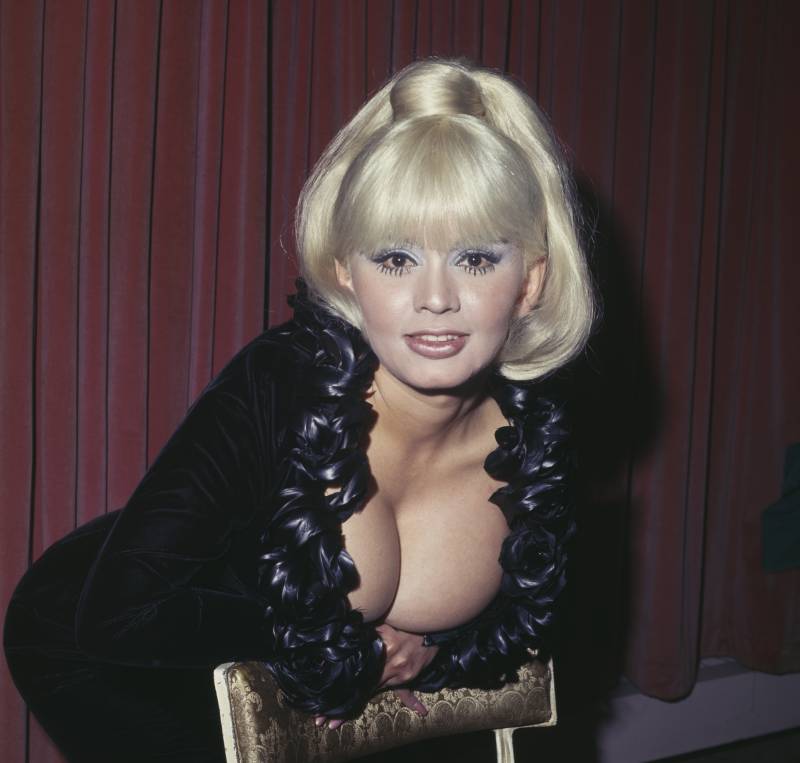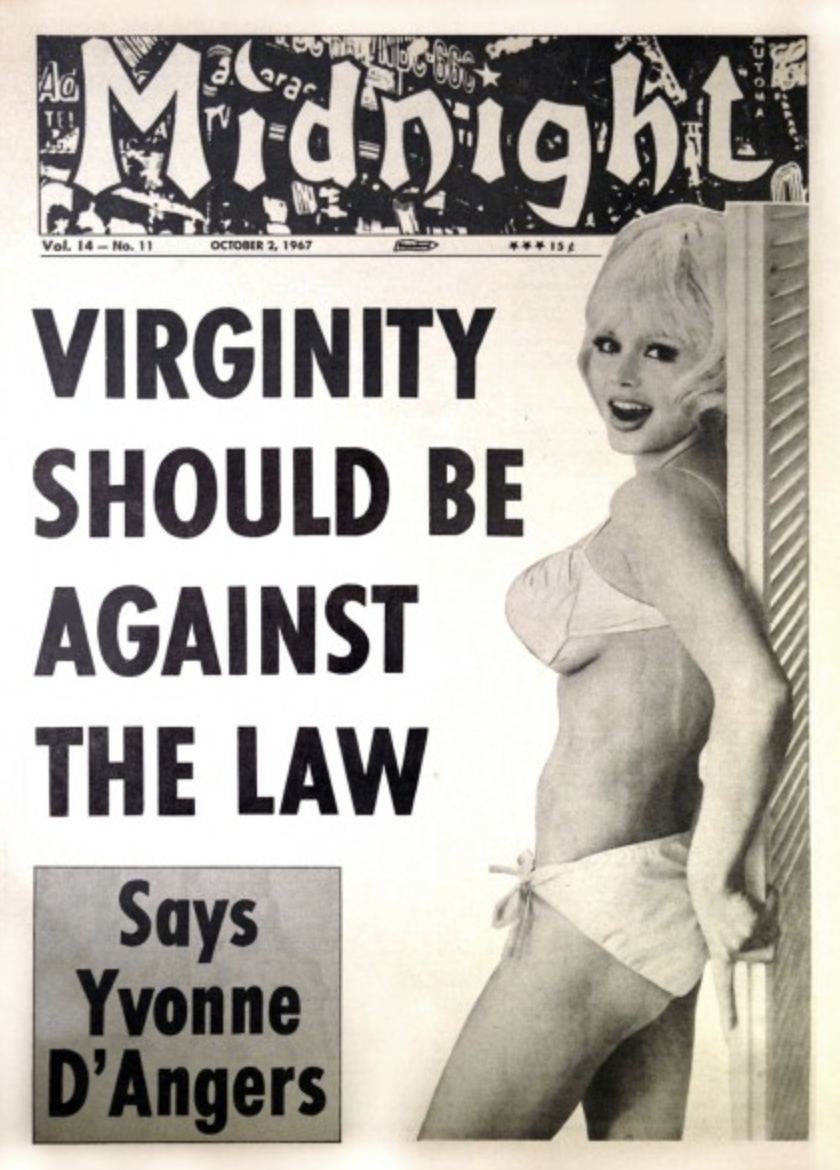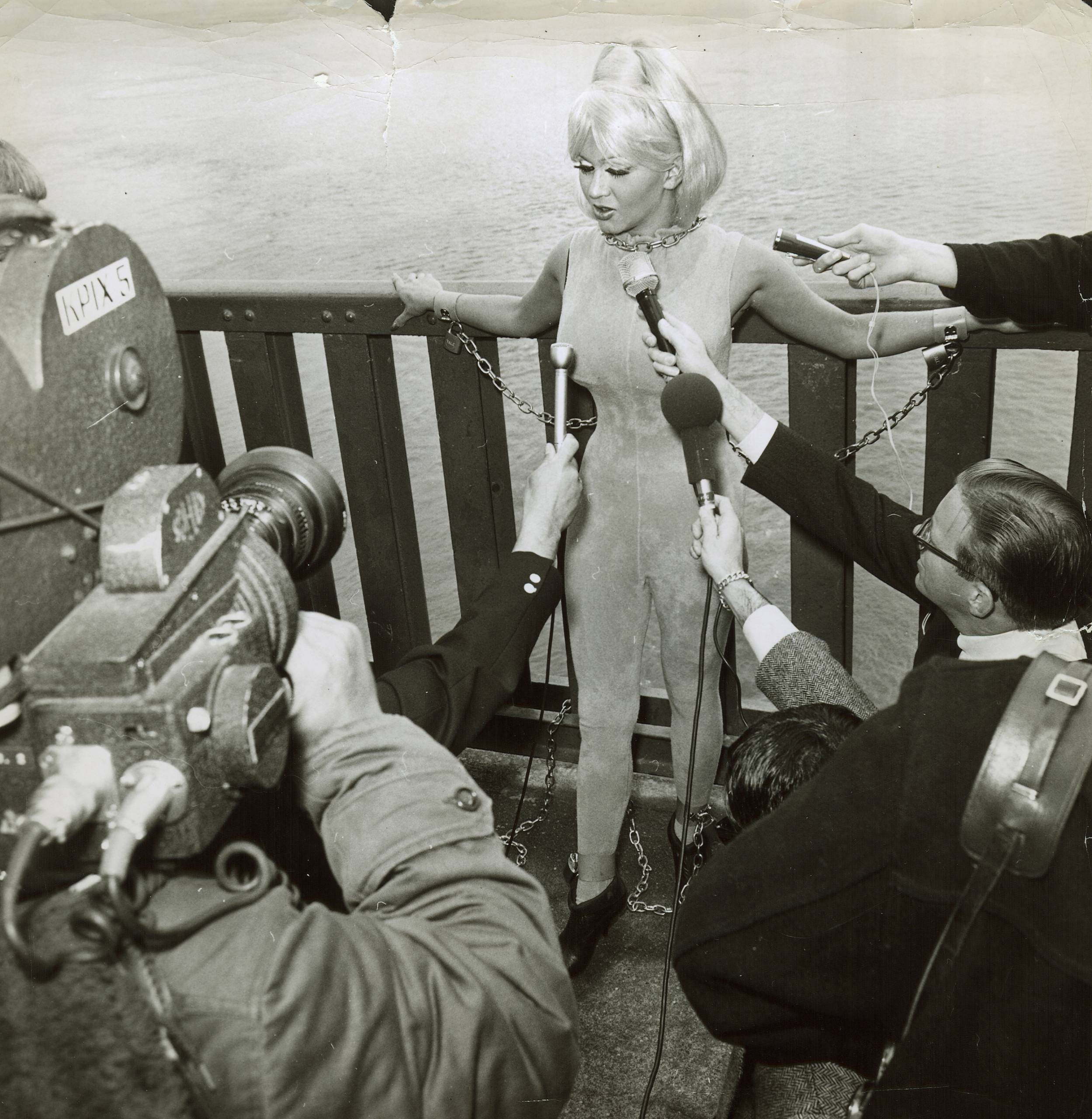This is the story of a young woman who routinely bared her body, but never revealed much about her true identity.
Her name was Yvonne D’Angers — sometimes. Her birth name was rumored to be Mahviz Daneshforouz. Sometimes she went by Yvonne Donjay. Others knew her as Carmella Ettlinger when she worked as a cocktail waitress at bars around North Beach. Later, she adopted her second husband’s last name and became Yvonne Boreta. But at the peak of her fame in San Francisco, she was most affectionately referred to as “The Persian Lamb.”
D’Angers graduated from waitress to stage talent shortly after Carol Doda first went topless at the Condor. As North Beach venues scrambled to compete with Doda, the Off Broadway (located at 1024 Kearny) employed D’Angers — a large-breasted beauty who was rumored to be one of the reasons Doda first enhanced her chest with silicone. In 1966, at the peak of her fame, D’Angers posed for Playboy and played Cleopatra at the month-long opening party for Caesar’s Palace in Las Vegas.





